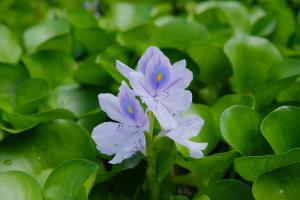Introduction
Hosta plants have become a popular addition to many gardens due to their lush foliage and ease of care. These plants come in a variety of shapes, sizes, and colors, making them a versatile addition to any garden.
Physical Characteristics
Hosta plants are perennials and can grow to be between 1 and 6 feet tall depending on the variety. Most hostas have a clumping growth habit and produce elongated oval or heart-shaped leaves. These leaves can be green, blue, or variegated with a range of patterns or markings. In the summer months, hostas produce spikes of lavender or white flowers that attract pollinators.
Care Requirements
Hosta plants are relatively easy to care for and can thrive in a variety of conditions. These plants prefer partial to full shade, although some varieties can tolerate more sun. Hostas require well-drained soil that is kept consistently moist, but not waterlogged. These plants benefit from occasional fertilization and should be divided every few years to prevent overcrowding.
Uses in Garden Design
Hosta plants are a popular addition to shade gardens due to their tolerance of low-light conditions. These plants can be used as a border plant, groundcover, or planted in groupings to create a lush and layered effect. Hostas are also commonly used in container gardening and make an excellent potted plant for patios or balconies.
Varieties
There are hundreds of hosta varieties to choose from, each with unique foliage, size, and color. Some popular varieties include 'Sum and Substance', which has large chartreuse leaves, 'June', with blueish-green leaves and creamy yellow margins, and 'Paul's Glory', with green leaves and a gold center. Newer varieties are constantly being introduced to the market, allowing gardeners to keep their gardens fresh and exciting.
Pests and Diseases
Like all plants, hostas are susceptible to pests and diseases. Common pests include slugs, snails, and deer, which can all cause damage to the foliage. Diseases such as leaf spot and crown rot can also affect the health and appearance of hosta plants. To prevent these issues, gardeners should practice good sanitation and take preventative measures, such as using slug bait and monitoring for signs of disease.
Conclusion
In conclusion, hosta plants are a versatile and low-maintenance addition to any garden. With a range of varieties to choose from, gardeners can create a unique and personalized space that will be enjoyed for years to come.

 how many times do yo...
how many times do yo... how many planted tre...
how many planted tre... how many pine trees ...
how many pine trees ... how many pecan trees...
how many pecan trees... how many plants comp...
how many plants comp... how many plants can ...
how many plants can ... how many plants and ...
how many plants and ... how many pepper plan...
how many pepper plan...






























